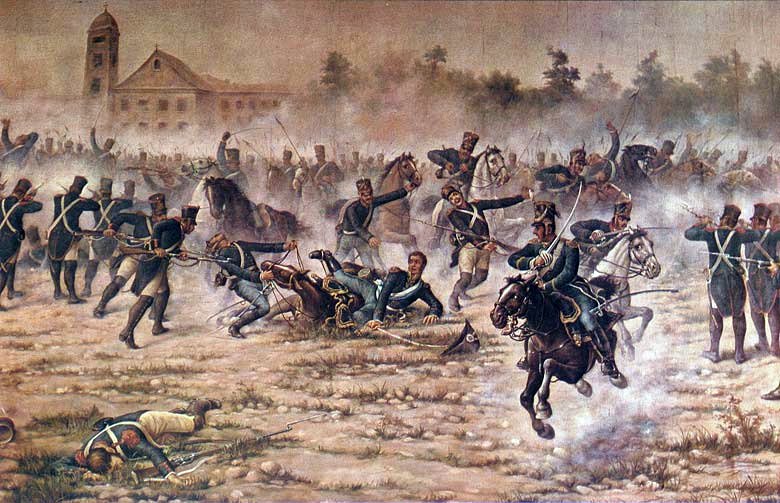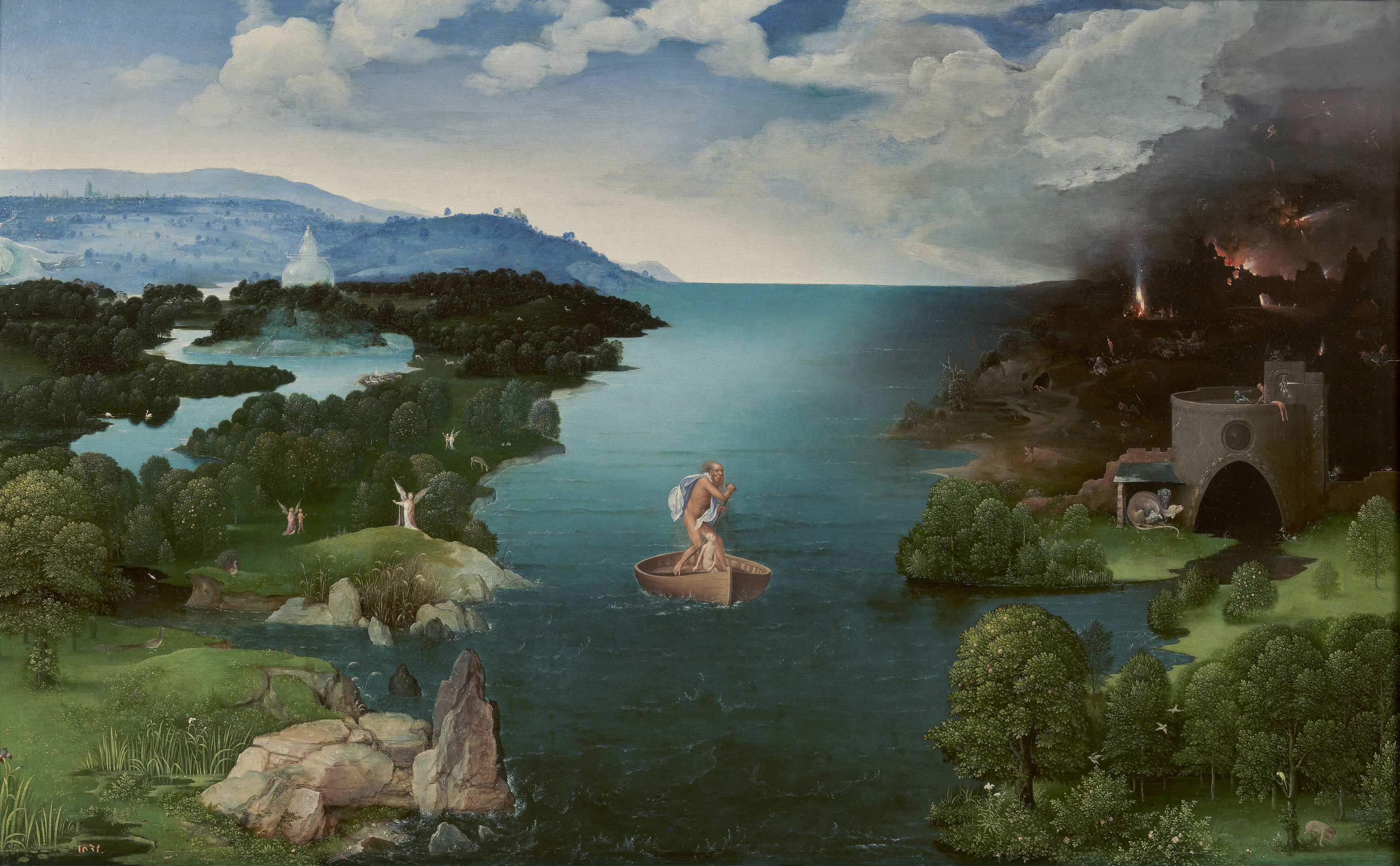|
August Bromeis
August Bromeis, a landscape painter, who was born at Wilhelmshöhe in 1813, first studied in the academy of his native town, then at Munich, from 1831 to 1833, in which year he went to Rome, where he was much influenced by the style of J. A. Koch. Bromeis returned to Germany in 1848, and resided at Frankfurt am Main and Düsseldorf, and at Cassel, where he was made Instructor and Professor of Painting at the Academy in 1867. He died at Cassel in 1881. His most successful pictures were idealized landscapes, for example: *''The Campagna at Rome'' (in the Town Gallery at Cassel). *''Italian Landscape'', 1869 (in the National Gallery at Berlin) *''The Grave of Archimedes in Sicily''. *''Stormy Landscape''. *''Forest near Düsseldorf''. He is associated with the Düsseldorf school of painting. See also * List of German painters This is a list of German painters. A > second column was into info box --> * Hans von Aachen (1552–1615) * Aatifi (born 1965) * Karl Abt (189 ... [...More Info...] [...Related Items...] OR: [Wikipedia] [Google] [Baidu] |
List Of German Painters
This is a list of German painters. A > second column was into info box --> * Hans von Aachen (1552–1615) * Aatifi (born 1965) * Karl Abt (1899–1985) * Tomma Abts (born 1967) * Andreas Achenbach (1815–1910) * Oswald Achenbach (1827–1905) * Herbert Achternbusch (1938–2022) * Franz Ackermann (born 1963) * Johann Adam Ackermann (1780–1853) * Max Ackermann (1887–1975) * Otto Ackermann (1872–1953) * Albrecht Adam (1786–1862) * Benno Adam (1812–1892) * Emil Adam (1843–1924) * Eugen Adam (1817–1880) * Franz Adam (1815–1886) * Heinrich Adam (1787–1862) * Luitpold Adam (1888–1950) * Jankel Adler (1895–1949) * Salomon Adler (1630–1709) * Christoph Ludwig Agricola (1667–1719) * Karl Agricola (1779–1852) * August Ahlborn (1796–1857) * Erwin Aichele (1887–1974) * Wolfram Aichele (1924–2016) * Max Ainmiller (1807–1870) * Josef Albers (1888–1976) * Heinrich Jacob Aldenrath (1775–1844) * William Alexander (1915–1997) ... [...More Info...] [...Related Items...] OR: [Wikipedia] [Google] [Baidu] |
19th-century German Male Artists
The 19th (nineteenth) century began on 1 January 1801 ( MDCCCI), and ended on 31 December 1900 ( MCM). The 19th century was the ninth century of the 2nd millennium. The 19th century was characterized by vast social upheaval. Slavery was abolished in much of Europe and the Americas. The First Industrial Revolution, though it began in the late 18th century, expanding beyond its British homeland for the first time during this century, particularly remaking the economies and societies of the Low Countries, the Rhineland, Northern Italy, and the Northeastern United States. A few decades later, the Second Industrial Revolution led to ever more massive urbanization and much higher levels of productivity, profit, and prosperity, a pattern that continued into the 20th century. The Islamic gunpowder empires fell into decline and European imperialism brought much of South Asia, Southeast Asia, and almost all of Africa under colonial rule. It was also marked by the collapse of the la ... [...More Info...] [...Related Items...] OR: [Wikipedia] [Google] [Baidu] |
German Landscape Painters
German(s) may refer to: * Germany (of or related to) **Germania (historical use) * Germans, citizens of Germany, people of German ancestry, or native speakers of the German language ** For citizens of Germany, see also German nationality law **Germanic peoples (Roman times) * German language **any of the Germanic languages * German cuisine, traditional foods of Germany People * German (given name) * German (surname) * Germán, a Spanish name Places * German (parish), Isle of Man * German, Albania, or Gërmej * German, Bulgaria * German, Iran * German, North Macedonia * German, New York, U.S. * Agios Germanos, Greece Other uses * German (mythology), a South Slavic mythological being * Germans (band), a Canadian rock band * "German" (song), a 2019 song by No Money Enterprise * ''The German'', a 2008 short film * "The Germans", an episode of ''Fawlty Towers'' * ''The German'', a nickname for Congolese rebel André Kisase Ngandu See also * Germanic (other) ... [...More Info...] [...Related Items...] OR: [Wikipedia] [Google] [Baidu] |
19th-century German Painters
The 19th (nineteenth) century began on 1 January 1801 ( MDCCCI), and ended on 31 December 1900 ( MCM). The 19th century was the ninth century of the 2nd millennium. The 19th century was characterized by vast social upheaval. Slavery was abolished in much of Europe and the Americas. The First Industrial Revolution, though it began in the late 18th century, expanding beyond its British homeland for the first time during this century, particularly remaking the economies and societies of the Low Countries, the Rhineland, Northern Italy, and the Northeastern United States. A few decades later, the Second Industrial Revolution led to ever more massive urbanization and much higher levels of productivity, profit, and prosperity, a pattern that continued into the 20th century. The Islamic gunpowder empires fell into decline and European imperialism brought much of South Asia, Southeast Asia, and almost all of Africa under colonial rule. It was also marked by the collapse of the l ... [...More Info...] [...Related Items...] OR: [Wikipedia] [Google] [Baidu] |
1881 Deaths
Events January–March * January 1–January 24, 24 – Siege of Geok Tepe: Russian troops under General Mikhail Skobelev defeat the Turkmen people, Turkomans. * January 13 – War of the Pacific – Battle of San Juan and Chorrillos: The Chilean army defeats Peruvian forces. * January 15 – War of the Pacific – Battle of Miraflores: The Chileans take Lima, capital of Peru, after defeating its second line of defense in Miraflores. * January 24 – William Edward Forster, chief secretary for Ireland, introduces his Coercion Bill, which temporarily suspends habeas corpus so that those people suspected of committing an offence can be detained without trial; it goes through a long debate before it is accepted February 2. * January 25 – Thomas Edison and Alexander Graham Bell form the Oriental Telephone Company. * February 13 – The first issue of the feminist newspaper ''La Citoyenne'' is published by Hubertine Auclert. * Febru ... [...More Info...] [...Related Items...] OR: [Wikipedia] [Google] [Baidu] |
1813 Births
Events January–March * January 18–January 23 – War of 1812: The Battle of Frenchtown is fought in modern-day Monroe, Michigan between the United States and a British and Native American alliance. * January 24 – The Philharmonic Society (later the Royal Philharmonic Society) is founded in London. * January 28 – Jane Austen's ''Pride and Prejudice'' is published anonymously in London. * January 31 – The Assembly of the Year XIII is inaugurated in Buenos Aires. * February – War of 1812 in North America: General William Henry Harrison sends out an expedition to burn the British vessels at Fort Malden by going across Lake Erie via the Bass Islands in sleighs, but the ice is not hard enough, and the expedition returns. * February 3 – Argentine War of Independence: José de San Martín and his Regiment of Mounted Grenadiers gain a largely symbolic victory against a Spanish royalist army in the Battle of San Lorenzo. * Febru ... [...More Info...] [...Related Items...] OR: [Wikipedia] [Google] [Baidu] |
Düsseldorf School Of Painting
The Düsseldorf school of painting is a term referring to a group of painters who taught or studied at the Düsseldorf Academy (now the Staatliche Kunstakademie Düsseldorf or Düsseldorf State Art Academy) during the 1830s and 1840s, when the Academy was directed by the painter Wilhelm von Schadow. About The work of the Düsseldorf School is characterized by finely detailed yet fanciful landscapes, often with religious or allegorical stories set in the landscapes. Major members of the Düsseldorf School advocated " plein air painting", and tended to use a palette with relatively subdued and even colors. The Düsseldorf School derived from and was a part of the German Romantic movement. Prominent members of the Düsselorf School included von Schadow, Karl Friedrich Lessing, Johann Wilhelm Schirmer, Andreas Achenbach, Hans Fredrik Gude, Adolph Tidemand, Oswald Achenbach, and Adolf Schrödter. The Düsseldorf School had a significant influence on the Hudson River School i ... [...More Info...] [...Related Items...] OR: [Wikipedia] [Google] [Baidu] |
Landscape Art
Landscape painting, also known as landscape art, is the depiction of natural scenery such as mountains A mountain is an elevated portion of the Earth's crust, generally with steep sides that show significant exposed bedrock. Although definitions vary, a mountain may differ from a plateau in having a limited summit area, and is usually higher th ..., valleys, trees, rivers, and forests, especially where the main subject is a wide view—with its elements arranged into a coherent composition. In other works, landscape backgrounds for figures can still form an important part of the work. Sky is almost always included in the view, and weather is often an element of the composition. Detailed landscapes as a distinct subject are not found in all artistic traditions, and develop when there is already a sophisticated tradition of representing other subjects. Two main traditions spring from Western painting and Chinese art, going back well over a thousand years in both cas ... [...More Info...] [...Related Items...] OR: [Wikipedia] [Google] [Baidu] |
Alte Nationalgalerie
The Alte Nationalgalerie ( ''Old National Gallery'') is a listed building on the Museum Island in the historic centre of Berlin, Germany. The gallery was built from 1862 to 1876 by the order of King Frederick William IV of Prussia according to plans by Friedrich August Stüler and Johann Heinrich Strack in Neoclassical and Renaissance Revival styles. The building's outside stair features a memorial to Frederick William IV. Currently, the Alte Nationalgalerie is home to paintings and sculptures of the 19th century and hosts a variety of tourist buses daily. As part of the Museum Island complex, the gallery was inscribed on the UNESCO World Heritage List in 1999 for its outstanding architecture and its testimony to the development of museums and galleries as a cultural phenomenon in the late 19th century. History Founding The first impetus to founding a national gallery came in 1815. The idea gained momentum during the 1830s, but without an actual building. In 1841 the first r ... [...More Info...] [...Related Items...] OR: [Wikipedia] [Google] [Baidu] |
Kunsthochschule Kassel
Kunsthochschule Kassel (German; "Kassel College of Art") is a college of fine arts in Kassel, Germany. Founded in 1777, it is a semi-autonomous department of the University of Kassel . Notable people * Daniel Stieglitz * Peter Angermann * Sinan Akkuş * Bernhard, Count of Bylandt * Julius Bien (1826-1909) * August Bromeis * Paul Ehrhardt (1888-1981), student 1929-1931 * Bernd Friedmann * Horst Gläsker * Ludwig Emil Grimm * Dörte Helm (1898-1941), student 1915-1918 * Siglinde Kallnbach, attended 1976 - 1983 * Harry Kramer * Eduard Niczky * Bjørn Melhus * Eva Moll * Amalie Tischbein * Halsey Rodman * Hans Sautter (1877–1961), became professor in 1919, director from 1931 to 1933 * Wilhelm Schmidthild Wilhelm Schmidthild (January 30, 1876 in Hildesheim, Germany as Wilhelm Schmidt – January 30, 1951 in Peine, Germany) was a German painter, graphic artist, illustrator and art professor. He chose as his field detailed documentation as an il ... * Curt Witte (18 ... [...More Info...] [...Related Items...] OR: [Wikipedia] [Google] [Baidu] |






